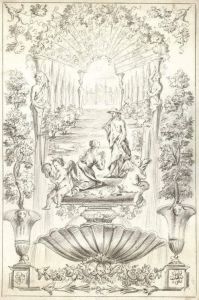Gottfried C. Eichler Paintings
Gottfried Christian Eichler was an 18th-century German engraver and draughtsman, born in 1715. His work is a reflection of the artistic movements and styles that pervaded Europe during his lifetime, particularly those of the Baroque and Rococo periods. Eichler's engravings and drawings are characterized by their intricate details, delicate lines, and the emphasis on light and shadow, which were hallmark techniques of the time, showcasing the transition from the grandeur and drama of the Baroque to the lighter, more ornate features of the Rococo.
Eichler's career was significantly influenced by the cultural and artistic environment of the German states, which were then a patchwork of principalities, duchies, and bishoprics, each with its own artistic traditions and demands. This context provided a rich tapestry of influences that Eichler could draw upon in his work. He was known for his portraits, landscapes, and especially for his illustrations of literary and religious texts, which were highly sought after. These works not only highlight his technical skill but also his ability to convey complex themes and narratives visually.
Despite the recognition he received during his lifetime, Gottfried Christian Eichler's name is not as widely known today as some of his contemporaries. This can be attributed to the vast number of artists working in similar mediums and styles during the period, as well as the shifting tastes in art that followed the Rococo period, leading to the rise of Neoclassicism. Nevertheless, Eichler's contributions to the world of engraving and his role in the artistic developments of the 18th century remain important. He died in 1770, leaving behind a body of work that continues to be studied and appreciated for its beauty and historical value.

